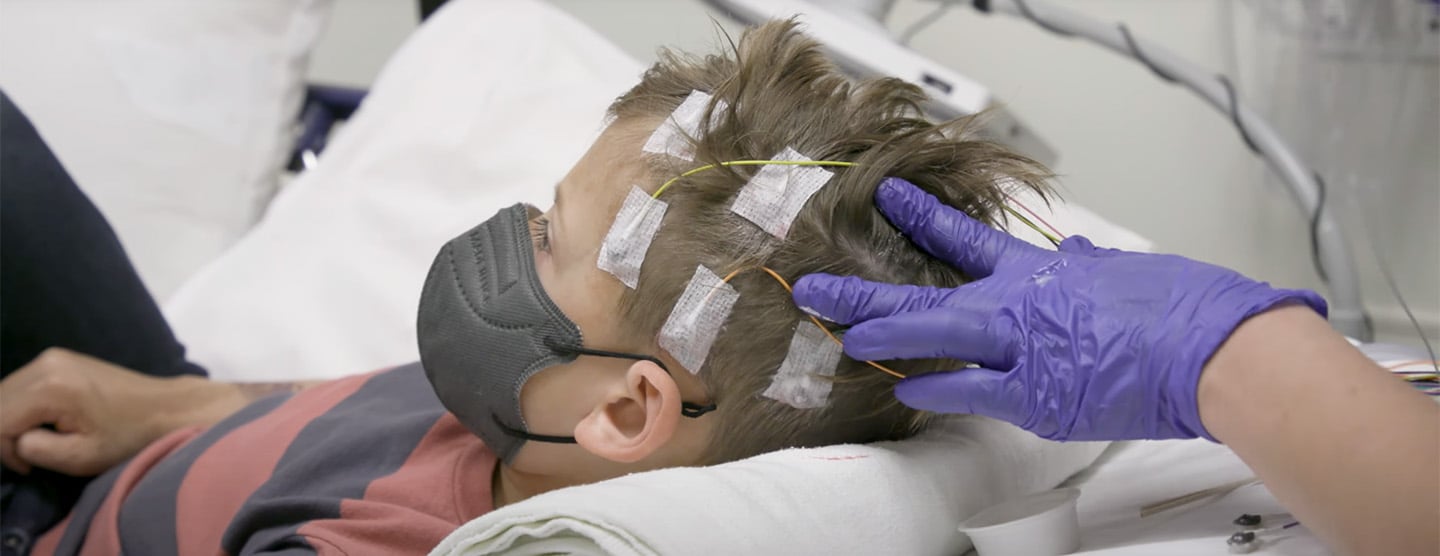What Is an EEG (electroencephalogram)?
An EEG is a test that gives important information about the health and functioning of the brain. It can help diagnose, monitor or rule out conditions such as epilepsy, headaches, stroke, brain injury, brain tumors, sleep disorders, seizure disorders and cerebral palsy. Early accurate diagnosis with EEG can make more effective treatment possible.
Electrodes are small metal discs that pick up electrical impulses. During an EEG test, we use paste to secure them to key locations on the head. Wires lead from the electrodes to the EEG machine, which detects electrical impulses from the brain that create patterns. The test is displayed on a computer screen as well as recorded and stored in a computer file.
A physician will analyze the recorded electrical patterns and deliver a report to your child's doctor, who will go over the results with you at a follow-up appointment.
For the test to capture brain activity during drowsiness and sleep, which can aid in diagnosis, your child may need to be temporarily sleep deprived.
Preparing for an EEG Test
- Plan to be with the technologist for one to two hours depending on the type of study, setup time and your child's medical needs.
- Wash your child's hair thoroughly the morning of your appointment. The scalp must be clean and oil free, so don't use conditioners, hairspray or other hair products. Your child's hair should be completely dry as well.
- Make sure your child eats a meal or snack an hour or two before the test. This will help stabilize blood sugar levels and facilitate sleep. Your child should avoid caffeine and sugar the night before the test.
- Be prepared to answer questions about your child's medical history, current symptoms and medications. You may find it helpful to bring a list.
- Give your child's medication as prescribed unless his or her physician has directed you otherwise.
- It is extremely important that we get your child to sleep during the EEG. You know your child's sleep habits and schedule best, but here are some general guidelines:
- For children under 2 years old, wake them one to two hours earlier than usual.
- For children between 2 and 4, keep them up at least one to two hours past their bedtime and wake them at least one to two hours earlier than normal.
- For children between 5 and 12, keep them up until midnight and wake them at 6 a.m.
- For children 13 and older, keep them up until 2 a.m. and wake them at 6 a.m.
- Don't let your child sleep on the way to the appointment. You may want someone else in the car to keep him or her awake while you drive.
- If your child takes a regular nap, you may wish to request an appointment that coincides with nap time.
- Although the test is painless, younger patients and patients with special needs may feel frightened. If your child has sensory or anxiety issues, or another condition that could make the process take longer, please request a two-hour time slot. Explaining the test ahead of time can reduce anxiety. Our technologists are trained to deal with anxious patients, but the following tips may help the test go more smoothly:
- Dress your child in pajamas or other comfortable clothes, and bring bottles or pacifiers if used.
- Bring favorite items that make your child feel safe and calm, such as toys, blankets, music on CD and movies on DVD. Books and games can help distract them during the test setup.































